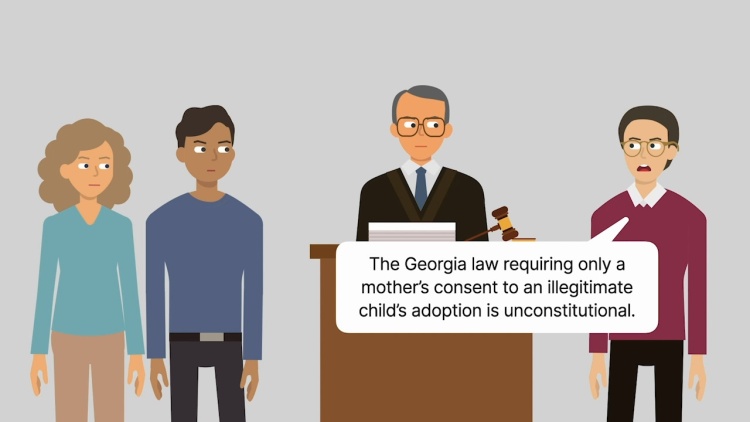Quilloin v. Walcott
United States Supreme Court
434 U.S. 246, 98 S. Ct. 549, 54 L. Ed. 2d 511 (1978)
- Written by Haley Gintis, JD
Facts
In 1976, Randall Walcott (plaintiff) filed a petition to adopt the child his wife, Ardell Williams, had with Leon Webster Quilloin (defendant) in 1964. Although Quilloin was the biological father, he had never filed for legitimation prior to the adoption petition and he provided support to the child on an irregular basis. The child had always been in Williams’s custody and had been living in the home Walcott and Williams shared since they married in 1967. After Walcott filed the adoption petition, Quilloin filed a petition for legitimation, for visitation rights, and to object to the adoption. A trial court held a hearing, during which the child informed the judge that he wanted to be adopted by Walcott. The trial court found that Walcott was a fit and proper person to adopt the child. Although the court did not find that Quilloin was an unfit parent, it granted the adoption petition after concluding it was in the best interest of the child. The trial court also held that because Quilloin never previously filed a court order for legitimation, he did not have standing to object to the adoption under Georgia law because only the mother’s consent is needed for the adoption of an illegitimate child and until the child is legitimated, only the mother has the power to veto the adoption. Quilloin appealed, arguing that the adoption statute violated the Due Process Clause and Equal Protection Clause of the United States Constitution.
Rule of Law
Issue
Holding and Reasoning (Marshall, J.)
What to do next…
Here's why 899,000 law students have relied on our case briefs:
- Written by law professors and practitioners, not other law students. 47,000 briefs, keyed to 994 casebooks. Top-notch customer support.
- The right amount of information, includes the facts, issues, rule of law, holding and reasoning, and any concurrences and dissents.
- Access in your classes, works on your mobile and tablet. Massive library of related video lessons and high quality multiple-choice questions.
- Easy to use, uniform format for every case brief. Written in plain English, not in legalese. Our briefs summarize and simplify; they don’t just repeat the court’s language.





